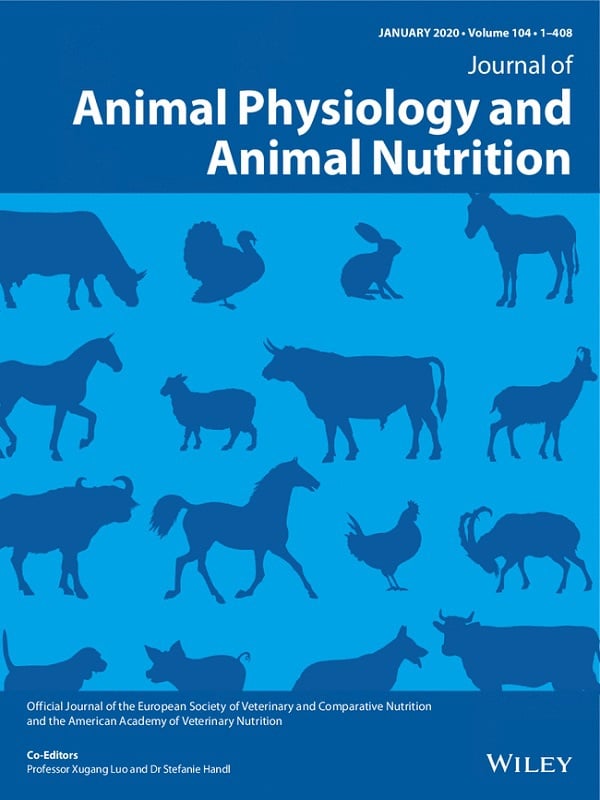Fibre supplementation to pre-weaning piglet diets did not improve the resilience towards a post-weaning enterotoxigenic E. coli challenge
- Scientific Journal
- English
- Swine

Abstract
Dietary fibre (DF) is implicated in gastrointestinal health of weaned piglets, either through its physiochemical properties, through modulation of gut microbiota and (or) improved gut integrity. We aimed to study the effect of DF enriched supplemental diets fed to suckling piglets ('creep feed') on health and performance after weaning when challenged with an enterotoxigenic E. coli (ETEC). Seventy-two piglets originating from 28 litters had been fed four creep diets, that is a low-fibre control (CON); a diet containing 2% long-chain arabinoxylans from wheat (lc-AXOS) or 5% purified cellulose (CELL) or a diet containing the high fermentable and the low-fermentable fibre source (i.e. 2% lc-AXOS and 5% CELL). Upon weaning, piglets were individually housed and all fed the same diet. On days 7, 8 and 9, animals received an oral dose of ETEC (5 ml containing 107 to 108 CFU/ml). Besides growth performance, faecal and skin scores were recorded daily. Gut permeability was assessed by urinary excretion of Co-EDTA prior and post-ETEC challenge. Repeated measures in time were statistically evaluated with generalized linear mixed models. We used a binominal distribution for evaluating the faecal and skin scores. Feed intake and body weight gain did not differ between treatments (p > .05). Piglets on CELL decreased gain:feed ratio in week 2 + 3 week compared to CON (p = .035). Prior to ETEC challenge, gut permeability tended to increase for lc-AXOS (p = .092). Moreover, lc-AXOS as main effect increased intestinal permeability before ETEC challenge (p = .013), whereas the low-fermentable fibre lead to elevated intestinal permeability after ETEC challenge (p = .014). The incidence of diarrhoea was higher for lc-AXOS + CELL compared with lc-AXOS (p = .036), while skin condition was unaffected. In conclusion, neither the high fermentable nor the low-fermentable fibre source improved post-weaning growth or gastrointestinal health of the piglets.